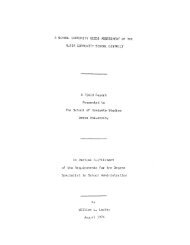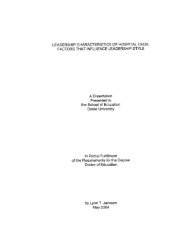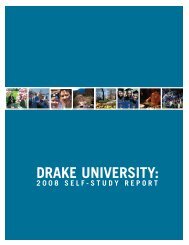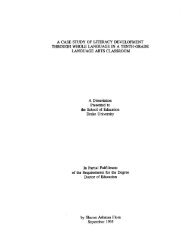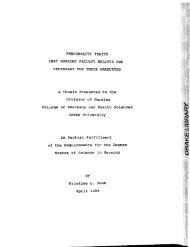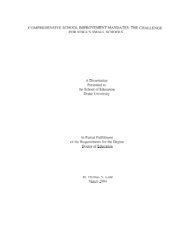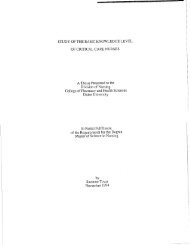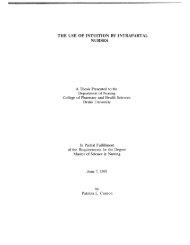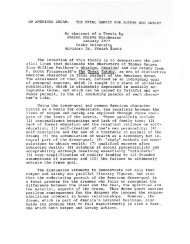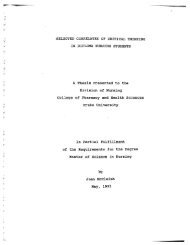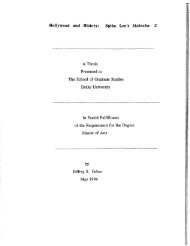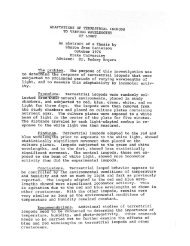LOCUS OF CONTROL ORIENTATION AND LEVEL - Drake University
LOCUS OF CONTROL ORIENTATION AND LEVEL - Drake University
LOCUS OF CONTROL ORIENTATION AND LEVEL - Drake University
You also want an ePaper? Increase the reach of your titles
YUMPU automatically turns print PDFs into web optimized ePapers that Google loves.
Low positive correlations with appr~pfiate internal, powerful others, and chance<br />
(1, P & C) scale items indicated construct validity. Predictive validity was<br />
established with correlations in the predicted direction of the MHLC scales with<br />
the health status (Wallston et al., 1978).<br />
Protection of Human Rights<br />
Permission to conduct the study was obtained from the <strong>Drake</strong> <strong>University</strong><br />
Human Subjects Research Review Committee (HSRRC) and the hospital's<br />
Institutional Review Committee (IRC) (see Appendix E for letter of permission<br />
from IRC). Permission was received from Wallston to use the MHLC scales<br />
(see Appendix F for permission to use MHLC scales). The subjects' rights to<br />
freedom from harm, informed consent, and privacy were protected. Potential<br />
subjects were sent a consent letter, the MHLC scales, and a self-addressed<br />
stamped envelope. The eonsent letter informed the potential subjects of the<br />
purpose of the study, the person's role in the study, potential benefits, and<br />
directions as to how to complete the materials (see Appendix G for consent<br />
letter). The letter included a statement that completion and return of the<br />
materials indicated consent to participate and allowed the researcher permission<br />
to review the patient record for pain scores and demographic data. This study<br />
required no intervention or manipulation of the normal course of therapy and<br />
therefore no threat of harm for the participants. The only possible threat to<br />
participants was an invasion of privacy. Participants were assured that<br />
confidentiality was to be maintained by identifying persons only by their<br />
hospital 1.D. number throughout the study. The subjects were informed that<br />
any data published as a result of this study would be reported as '4ZgrePte data-



